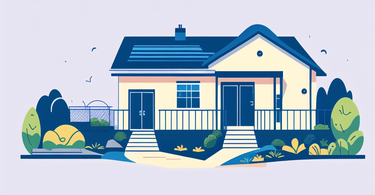Understanding the Benefits of Garden Fences in Landscaping
The Aesthetic Appeal of Garden Fences
Garden fences are more than just barriers. They add charm and character to any outdoor space. A well-chosen fence can enhance your garden's beauty. It can create a cozy, enclosed feeling or serve as a backdrop for plants. Fences come in various styles, from rustic wood to sleek metal. They can match your home's architecture or stand out as a focal point. Some fences have decorative elements like lattice tops or carved posts. These details add visual interest to your yard. A garden fence can also frame views, guiding the eye to specific landscape features.

Functional Advantages of Garden Fences for Homeowners
Garden fences offer many practical benefits for homeowners. They define property lines clearly, avoiding disputes with neighbors. Fences can block unwanted views and reduce noise from nearby streets or properties. They provide privacy, creating a secluded outdoor retreat. For pet owners, a fence keeps animals safe within the yard. Fences can also protect gardens from wildlife like deer or rabbits. In windy areas, they act as windbreaks, shielding delicate plants. Some fences can even increase property value by improving curb appeal.
The Role of Garden Fences in Property Security
Security is a key function of garden fences. They create a physical barrier around your property. This deters trespassers and keeps unwanted visitors out. Tall, solid fences make it harder for potential intruders to see inside. This reduces the risk of break-ins. Fences with locked gates control access to your home and yard. They keep children and pets safely within the property boundaries. Some fences can be fitted with security features like spikes or electric wires. However, always check local laws before adding such elements. A well-maintained fence shows that the property is cared for, further discouraging criminal activity.
Selecting the Right Garden Fence for Your Space
Assessing Different Types of Garden Fences
There are many types of garden fences to choose from. Picket fences offer a classic, charming look. They're great for front yards and cottage gardens. Privacy fences are tall and solid, perfect for creating secluded spaces. Panel fences are easy to install and come in various designs. Chain-link fences are affordable and durable, ideal for large areas. Wrought iron fences add elegance and security. Split-rail fences suit rustic or country-style gardens. Living fences, made of hedges or trees, blend naturally with the landscape. Each type has its pros and cons. Consider your needs, budget, and garden style when choosing.

Material Considerations for Garden Fences
The material of your fence affects its look, durability, and maintenance needs. Wood is versatile and natural-looking. It can be painted or stained but needs regular upkeep. Vinyl is low-maintenance and comes in many colors. It's durable but can look artificial. Metal fences, like aluminum or wrought iron, are strong and long-lasting. They're great for security but can be expensive. Composite materials combine wood fibers and plastic. They offer the look of wood with less maintenance. Bamboo is eco-friendly and suits tropical or zen gardens. Stone or brick fences are sturdy and timeless but costly to build.
Seasonal Impact on Garden Fence Selection
Seasons play a role in fence selection and maintenance. In areas with harsh winters, choose materials that resist frost and moisture. Wood may warp or rot in wet climates. Metal can rust without proper treatment. In hot, sunny regions, some materials might fade or crack. Consider how the fence will look year-round. Will it provide winter interest when plants are bare? How will it handle snow accumulation? Think about maintenance needs in different seasons. Some fences require spring cleaning or fall weatherproofing. Pick a fence that complements your garden in all seasons.
Integrating Garden Fences with Vertical Planters
Design Principles for Effective Garden Fence Installation
When installing a garden fence, follow key design principles. First, ensure the fence complements your home and garden style. Plan the layout carefully to maximize space and functionality. Consider sight lines and how the fence will impact views. Proper spacing between posts is crucial for stability. Make sure the fence height complies with local regulations. Factor in gates for easy access to different areas. If using the fence for privacy, calculate the right height and density. For security, choose appropriate locking mechanisms. Blend the fence with existing landscape features for a cohesive look.

Creative Ideas for Combining Garden Fences with Vertical Planters
Combining garden fences with vertical planters creates a lush, living screen. Here are some ideas:
- Hang pocket planters on fence panels for a wall of flowers.
- Install trellises on the fence for climbing vines.
- Use fence posts as supports for tall container plants.
- Create a living fence by planting climbers directly at the base.
- Attach window boxes to the top of the fence for trailing plants.
- Incorporate built-in planter boxes into the fence design.
- Use the fence as a backdrop for tiered plant stands.
- Hang vertical garden systems on sturdy fence sections.
These combinations add depth, texture, and color to your garden boundary.
Best Practices for Garden Fence Maintenance in the United States
Proper maintenance keeps your garden fence looking good and lasting long. In the U.S., climate varies widely, so adapt these tips to your region. Inspect your fence regularly for damage or wear. Clean it annually with appropriate methods for the material. For wood fences, apply sealant or stain every few years. Check for loose boards or posts and repair promptly. In coastal areas, protect metal fences from salt corrosion. In snowy regions, clear snow from fence bases to prevent moisture damage. Trim plants growing on or near the fence to prevent overgrowth. Keep the fence line clear of debris and weeds. For electric or automated gates, schedule professional maintenance checks. With proper care, your garden fence will remain a beautiful, functional part of your landscape for years to come.
